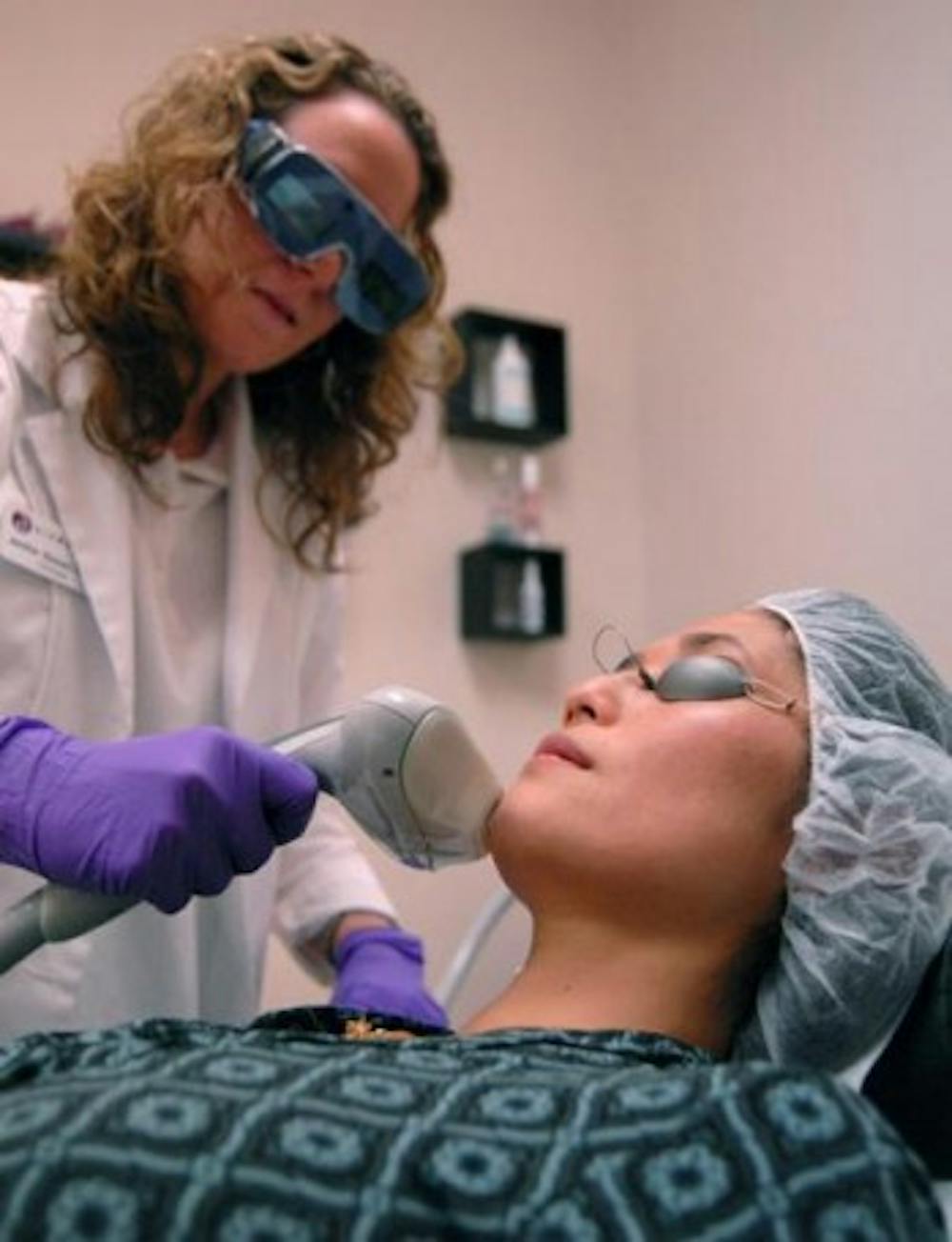After Ashlei Rayborn felt the first zap on her skin, she knew the doctor lied about the pain.
Her laser hair-removal procedure would hurt.
The hassle of constantly shaving and the pain of tweezing and waxing have led women and men to look for other alternatives for hair removal.
A 70 to 90 percent reduction of hair regrowth and thinner, softer hair are some benefits of the increasingly popular laser hair-removal procedure, consultants at the Gainesville-based Dermacare Laser & Skin Care Clinics said.
Rayborn, a UF public relations junior, first heard about laser hair removal in the summer from a friend.
Soon after, she made the decision to have her sideburns removed.
"My parents were like 'No, no, no. You don't need it,'" 20-year-old Rayborn said. "They said they couldn't afford it, so what I did was save up for it."
A single treatment can range from ,100 to ,650 depending on the size of the area being treated. With her savings and some money her parents pitched in, Rayborn went to get the procedure done at a laser center in North Miami Beach.
Laser hair-removal ranked third of the top five non-surgical cosmetic procedures performed in 2006, according to the American Society for Aesthetic Plastic Surgery. The second-largest group of laser hair-removal patients was between the ages of 19 and 34. Patients between 35 and 50 years old were the largest group, according to the society's statistics. Most laser hair-removal clients are women, but some men get hair on their backs removed, said Becky Persad, a consultant at Dermacare.
Persad said popular procedures among female clients are the removal of hair on the legs, the bikini area and the upper lip.
The procedure is done with a laser that produces a beam of highly concentrated light that is absorbed by hair follicles. The pulse of the laser vaporizes the pigment, eliminating or slowing down the hair's growth, according to Dermacare's Web site. The procedure only works when hair is growing, so multiple procedures are needed to remove hair from the desired area.
"We want to catch it while it's still growing," said Tonianne Grobmyer, a physician assistant at Dermacare. "You have to have three treatments, and we recommend five."
The number of required treatments varies on each client's unique metabolism, hormone level, hair quality and number of hair follicles, she said.
A period of four to six weeks is recommended between procedures. It takes up to a year to reach optimal results, Grobmyer said.
Rayborn said she felt pain during her treatment.
"They put this jelly-like stuff on my face," Rayborn said. "I didn't know what to expect. The doctor said it wouldn't hurt, but it did. It felt like needles."
Laser treatments can be painful because of the tingling sensation it causes, but varies among clients, said physician's assistant Jenifer Stover. Possible risks include burning, blistering, scarring and a loss or gain of color in the skin.
Sun exposure can cause redness and irritation, Grobmyer said. Rayborn, who was working at a summer camp during her first treatment, was overexposed to the sun.
"My face got pretty red," Rayborn said. "I looked like a tomato."
After the redness subsided, she went for her second procedure. She then ran out of time and money to invest in more treatments, and her hair began to grow back after nine months, Rayborn said.
The Food and Drug Administration only guarantees hair reduction for up to two years.
Rayborn said she would only recommend the laser hair-removal procedure if a person conducted a lot of research and could afford all the expenses.
"I think everyone should know what they are getting themselves into," she said.






